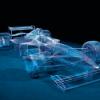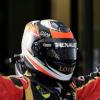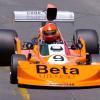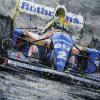It is apparent looking at the stint times from the few race sims we have that while the times are comparable with last year we're not seeing cars go that much quicker as the fuel burns off. In fact they appear to get slower towards the end which must have something to do with how they're saving fuel. With this in mind, I wonder if this year will be won by the tortoise rather than the hare.
I suspect that using as little fuel as possible early on will be the way to go, even if it means you fall back 15-20 seconds behind the leader as you'll have so much more in reserve that you'll be able to make it up towards the end of the race. This year there is a high probability of safety cars at every race due to the number of failures there are going to be. Anyone who burns a lot of fuel building a lead, runs the risk of then being caught out by a safety car. They then won't be able to compete with those who have managed to save fuel at the beginning of the race.
I predict that we'll see rapid first stints, where those qualifying in the top ten try to get themselves away from those runners who don't have to start on the tyres they qualified on. In the middle stint(s), I fear we're going to see some pretty dull fuel/engine management. No one wanting to risk using too much fuel for fear of a safety car and then things winding up a bit at the end of the race as everyone uses up every last drop of fuel. I think we could see some big changes in the final five laps. Cars that are miles behind might be able to catch up if the leaders are running out of fuel and having to go 3-4 seconds a lap slower.
Bearing all this in mind, I have to say that I think Fernando will be a real contender this year, even if the car is slow in qualifying, he has the best tactical brain and I suspect Ferrari will be more stalking than prancing horse this year.




























